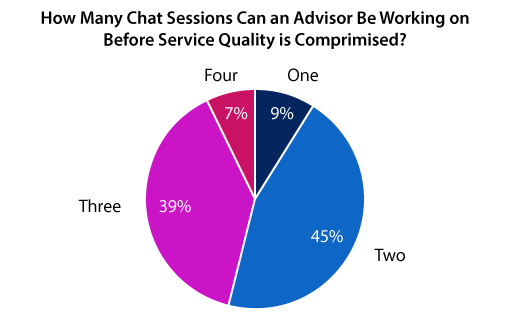10th November 2021

We asked our readers for their top tips and quick wins for dealing with chat and email.
Probing questions are important to clarify what the issue is about. For example “When did this problem first happen?” or “How often has this problem happened?”
It is all too easy to get into robotic mode and forget to be friendly. This is particularly a problem for chat.
It is important to set expectations about what will happen next. For example, if you are arranging a delivery, the customer may think that it will arrive the following day and will be disappointed it it arrives three days later. But if you set the expectation that it should arrive within four days, they will be delighted if it arrives sooner.

Leslie O’Flahavan
The more that you template replies, the more important it is that they are adapted to the customer. Nobody wants to receive a “Dear Valued Customer” or “Dear {First Name}” email
If you make email template difficult to customize, then you will just increase the number of robotic emails that get sent out.
It is important to show empathy to the customer.
You may be able cut and paste some of these empathy statements.
For more digital empathy statements, here’s a full list from Leslie O’Flahavan.
Thanks to Leslie O’Flahavan from E-Write.

Neil Martin
Teams with a process-focused culture make more mistakes than teams with a people-focused culture
Great service brands create a culture that fosters good writing:
Thanks to Neil Martin from First Word
For more email tips, read our article: 10 Top Tips to Improve Email in the Call Centre.
When selecting agents to work on live chat or direct messaging platforms, you need to be careful that they are comfortable with using the written word in the local language, otherwise a simple request or question can quickly turn into a dissatisfied customer and potentially a complaint
Thanks to Ian
The rule used to be put you most experienced agents on digital channels (especially social media). Be careful with this, as when your self-service digital engagement improves, the remaining contacts coming in to the contact centre will be the more complex ones.
Depending on your customer demographic, these may be coming on other channels, such as voice.
Thanks to Aaron
We will only allow an agent to take three chats and no more than this in one go. If the agent’s ability is a little lower, then we allow just two chats at one time.
Thanks to Bethany

This graph demonstrates the number of simultaneous chats an advisor can work on before service quality is compromised
The first part of any digital customer service response should be to focus on the customer’s feelings and using empathy.
Only then should you proceed to trying to resolve the issue.
Thanks to Tom
It is key to use empathy on digital channels.
A great and simple way to measure empathy is to ask “How would I feel?”
Thanks to Neil
We run quality checks on officers and praise them for being human and acknowledging the customer’s feelings.
Thanks to Reema
Empathy is a great skill but is emotionally and physically draining for agents to be consistently and unrelentingly empathic day in, day out.
Paul Bloom shows how Rational Compassion shows the right people skills and yields better results without the agent burnout/exhaustion.
Thanks to Kelly
When the customer reports a problem, make a note of it and repeat a summary back to them.
Paraphrasing customer issues/complaints early on helps them to feel understood, reducing tension.
Thanks to AlexU
Don’t use emojis in your written communication unless you’re mirroring the customer, or it fits with your culture as well as the tone of the interaction
Thanks to AlexU
For more information about using emojis, see our article: How to Handle Emojis in Customer Service
Try to avoid using “I am writing …” as this is often seen as obvious, and it tends to make the receiver immediately switch off and think it’s a standard generic response, so they may miss any important or relevant points in the communication
Thanks to Ian
Get Grammarly, an online spelling and grammar checker. Grammarly is great for emails, though it is not so good for chat as that is quick.
Thanks to Bethany
My best advice is to speak (or type) as though you are communicating with a member of your family.
Treat the words you use with respect and dignity.
Use correct full words, don’t shorten and spell incorrectly.
Always be polite.
Thanks to Lesley
For more information on how to build rapport, see our article: Best Tips, Phrases and Words to Use for Building Rapport
If there is no response from the customer, let them know you are there and they can continue the chat when they are ready.
Thanks to Bethany
For more advice of avoiding dead-air time, read Seven Tips to Avoid Dead=Air Time in Customer Service Calls.
Always recap the conversation if you can, and ask them if there is anything else you can help with.
You then may be able to upsell your other services, where you can.
Thanks to Lesley
For more on the topic of improving live chat and email, read our articles: